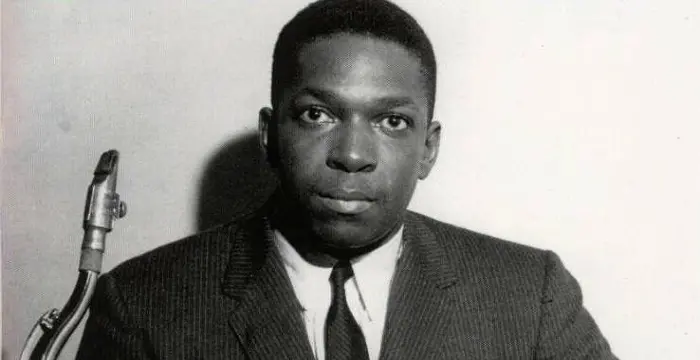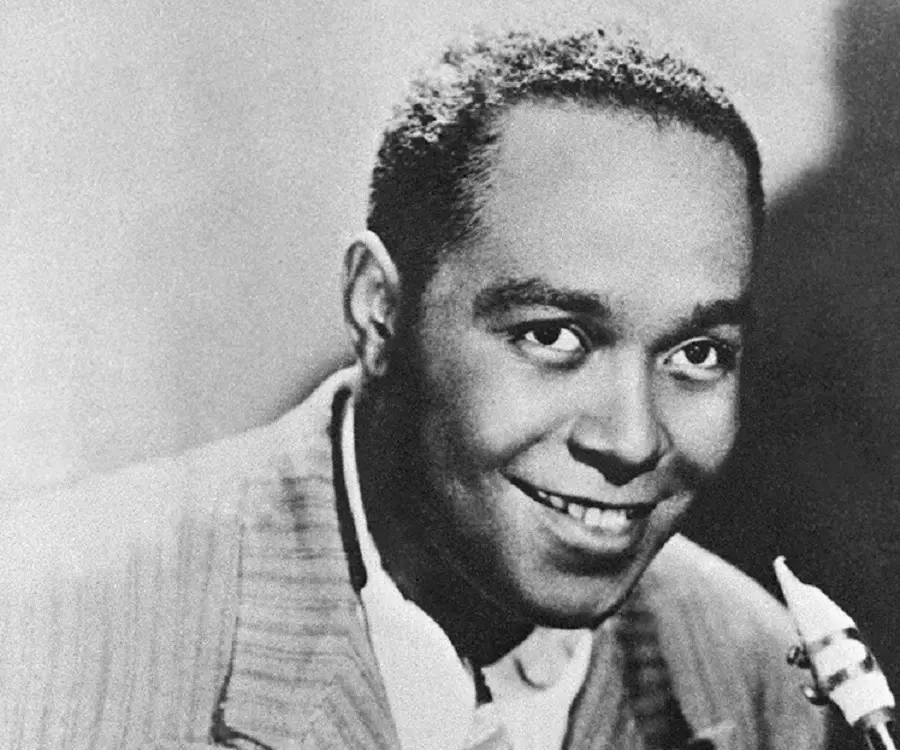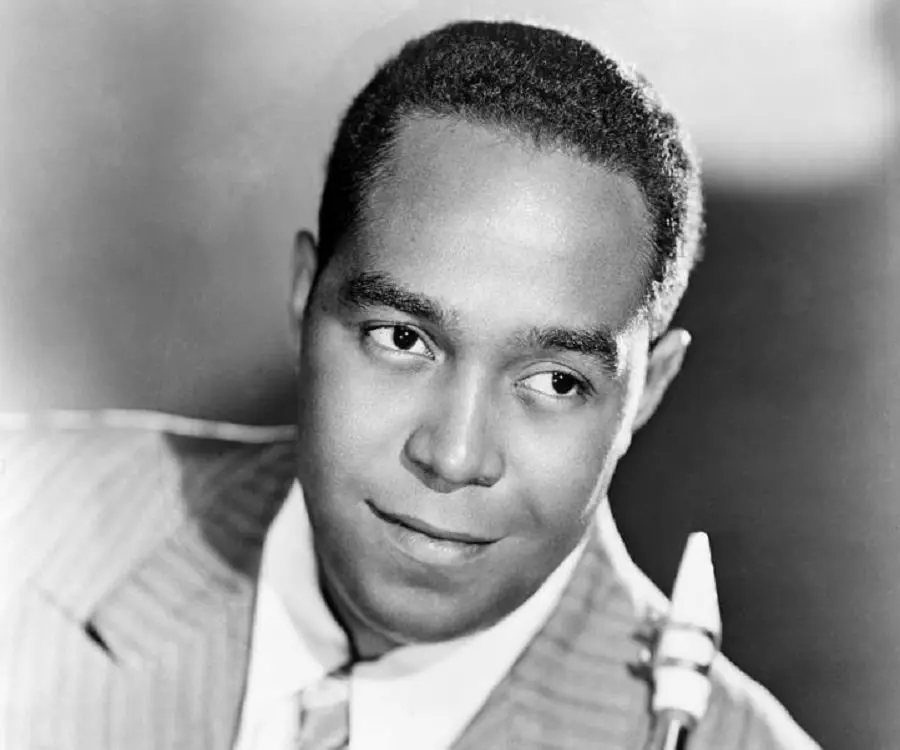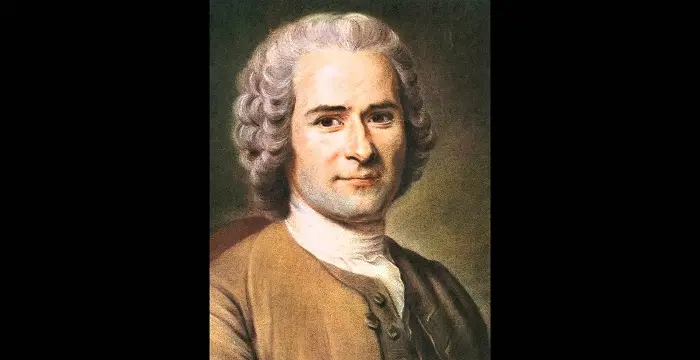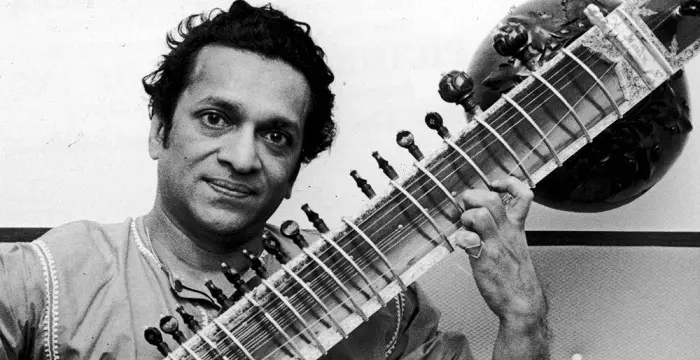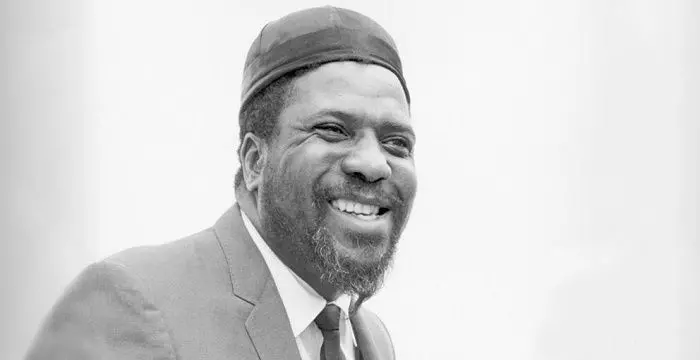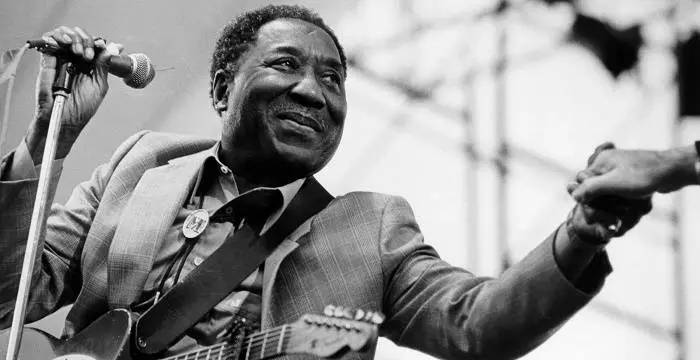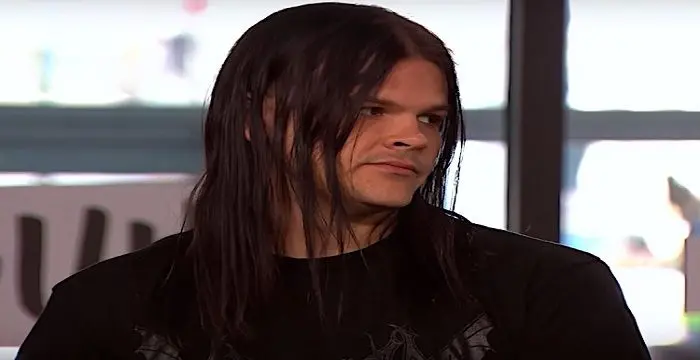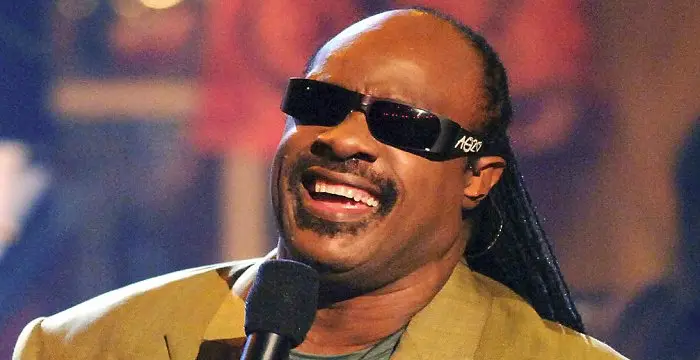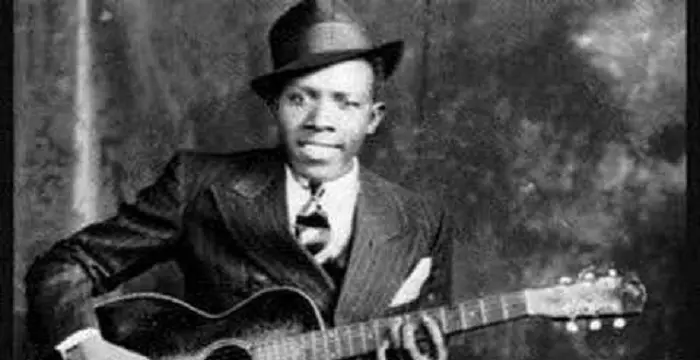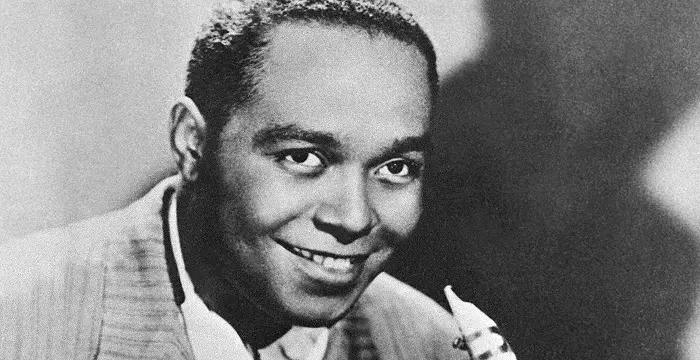
Charlie Parker - Composers, Career and Childhood
Charlie Parker's Personal Details
Charlie Parker was an American jazz saxophonist and composer
| Information | Detail |
|---|---|
| Birthday | August 29, 1920 |
| Died on | March 12, 1955 |
| Nationality | American |
| Famous | Alcoholics, Black Musicians, Black Singers, Died Young, Native Americans, Musicians, Composers, Jazz Saxophonist |
| City/State | Kansas, New Yorkers |
| Spouses | Chan Parker |
| Universities |
|
| Birth Place | Kansas City |
| Gender | Male |
| Father | Charles |
| Mother | Addie Parker |
| Sun Sign | Virgo |
| Born in | Kansas City |
| Famous as | Jazz saxophonist, composer |
| Died at Age | 34 |
// Famous Jazz Saxophonist
John Coltrane
John Coltrane was a renowned saxophonist and a Jazz music composer. Explore this biography to know more about his childhood, life, and timeline.
Charlie Parker's photo
Who is Charlie Parker?
Charlie Parker, known to jazz lovers as Yardbird or simply Bird, was an American jazz saxophonist and composer, born in Kansas City to a musician father and a charwoman mother. Interested in music from a young age, he started playing baritone horn while still in his junior class. But when at the age of eleven, he received his first saxophone, it became his favorite instrument. By that time, his father had abandoned them, and soon taking advantage of his mother’s night duties, the boy started frequenting clubs. At fifteen, he not only abandoned school and joined the professional musical circuit, but also started taking drugs. He never had any formal lessons in music but learned from listening to others play, which was accompanied by intense practice and at the same time, a will to experiment. Soon, he became well-known in jazz circuits and working with others, invented ‘bebop’ style of jazz. Unfortunately, years of substance abuse had its affect and Charlie died broken and pennyless at the age of thirty-four. Today, he is remembered as one of the twentieth century’s great musical innovators and father of bebop.
// Famous Composers
Jean-Jacques Rousseau
Jean-Jacques Rousseau was a noted Swiss-born philosopher, writer and composer. Check out this biography to know about his childhood, family life, achievements and other facts about his life.
Ravi Shankar
Ravi Shankar was one of the greatest music maestros from India who familiarized the West with the Indian classical music. Read the biography to know all about his profile, childhood, life and timeline.
Thelonious Monk
Thelonious Monk was an American jazz artist, pianist and composer, who is considered as one of the pioneers of the American jazz music. This biography provides detailed information on his childhood, life, music career, achievements and timeline.
Childhood & Early Life
Charlie Parker was born as Charles Christopher Parker Jr. on August 29, 1920, in Kansas City in the state of Kansas. His father, Charles Parker, was a pianist, dancer and singer of African-American ancestry while his mother, Addie Parker, was a charwoman of Native-American origin. Charlie was their only child.
In 1927, when he was seven years old, the family moved to Kansas City in the state of Missouri. Here, Charlie began his education at a public school.
Sometime around 1930-1931, Charles Parker abandoned his family and young Charlie was greatly saddened by the incidence. By now, he had started playing baritone horn at the school band. To cheer him up, his mother now bought him a saxophone.
Later in September 1934, his mother had him enrolled at the Lincoln High School. However, by that time, he had become too engrossed in music to pay much attention to his studies.
While his mother was away, working as a night cleaner, he began to visit the city’s clubs, listening to Lester Young, his saxophone hero. Finally in December 1935, he withdrew from school and joined the local musicians’ union. He was then fifteen years old and already into drugs.
Early Career
Very soon, Charlie Parker began working at jam sessions with various city bands. Even then, he was much too enthusiastic about improvising and very often, his fingers could not cope with the ideas that flowed in at great speed, resulting in great chaos.
In 1937, while working at a jam session with Count Basie's Orchestra at Reno Club, he tried to improvise but failed miserably, losing track of the chords. Enraged, drummer Joe Jones threw a cymbal at his feet, asking him to leave.
Humiliated, he started practicing earnestly for fifteen hours a day, mastering the fundamentals and building up his techniques. Later in the same year, he joined Buster Smith's band and imbibed much from him.
In 1938, Charlie joined Jay McShann's big band and in 1939 toured New York and Chicago with them. Once the tour ended, Charlie decided to stay back at New York.
In New York City
In New York, Charlie started his life as a dishwasher at Jimmie's Chicken Shack for nine dollars a week. Art Tatum was a pianist there and Charlie listened to him raptly, imbibing much from his music. Subsequently he started playing at different jam sessions and dime dance halls.
Sometime now, while working at a jam session with Biddy Fleet, he experienced a stylistic breakthrough. He later said that. “By using the higher intervals of a chord as a melody line and backing them with appropriately related changes I could play the thing I’d been hearing. I came alive.
He remained in the city for one year and then moved temporarily to Chicago before returning to New York City. Some time now, he came to know that his father had died and therefore, he went back Kansas City for his funeral, remaining there for five months.
At Kansas, he rejoined Jay McShann’s band and in 1941, made his debut record, the ‘Honeysuckle Rose’ with the orchestra. As the band performed in radio quite often, he also became quite popular. It was during this time that he began to be known as ‘Yardbird’.
In 1942, he recorded a few more pieces such as ‘Jumpin’ Blues’, ‘Lonely Boy Blues’ and ‘Sepian Bounce’ with the band. Concurrently, he also started playing at jam sessions at Harlem, where he met Dizzy Gillespie.
Sometime in the same year, Charlie was fired from McShann’s band due to the worsening of his drug habit. In December, after a period of freelancing, he got a job at Earl Hines’s band on Dizzy Gillespie’s recommendation and began working with him on an eight-month gig.
Soon, together with Dizzy Gillespie and some other musicians, he began experimenting with jazz music at an after-hour club in Harlem. Later it led to creation of bebop.
In 1944, when Billy Eckstine opened his own band, Charlie Parker joined him. Soon he was followed by Dizzy Gillespie and the two musicians continued their experiments with bebop music.
In 1945, Charlie formed his own band and at the same time, continued collaborating with Dizzy Gillespie. Also in the same year, he signed with Dial and made a series of recordings with Kenneth Norville, better known as Red Norvo.
In Los Angeles
Towards the end of 1945, Charlie Parker and Dizzy Gillespie embarked on a six weeks tour to Hollywood and from 10 December 1945 to 4 February 1946 played at Billy Berg's. It was during this tour that they were finally able to provide final touches to their bebop music.
While this new form of jazz created controversy, it had also had a large following. Nonetheless, after the end of the tour, Charlie decided to stay back at Los Angeles while Dizzy returned to New York.
By now, Charlie Parker had become heavily addicted to heroin. As it was not easily available in Los Angeles, he had also started taking alcohol. In the summer of 1946, he collapsed from drug and alcohol abuse, resulting in six months confinement at T Camarillo State Hospital.
Return To New York
Charlie Parker was released from the hospital in January 1947. Thereafter, he returned to New York and formed a quintet with trumpeter Miles Davis, drummer Max Roach, pianist Duke Jordan and Al Haig.
With this small group, he started performing at a variety of venues in and around New York such as Three Deuces and the Royal Roost and also gave a number of solo performances. It was the beginning of a relatively stable period for him.
Later on, he started touring major U.S. cities. Concurrently, he also resumed recording with Dial though in 1948, he signed with Savoy Records, recording ‘Parker’s Mood’ and other numbers. Eventually he shifted to Mercury.
In May 1949, he went on his debut European tour, attending the Paris International Jazz Festival. Then on November 30, he recorded an album of ballads with a mixed group of jazz and chamber orchestra musicians and when the Birdland opened in December, he performed on the opening night.
Most of his popular records were also made in 1949-50. Most popular among them were, ‘Relaxin’ at Camarillo’, ‘Night in Tunisia’, ‘Embraceable You’, ‘Donna Lee’, ‘Ornithology’ and ‘Parker’s Mood.
Meanwhile in early 1950, he abandoned his quintet and started performing with a number of small jazz groups. Later in the same year, he went on tour to Scandinavia and recorded many memorable pieces like ‘Confirmation’, ‘Chi-Chi’ and ‘Bloomdido.
Some time now, he also made several tours of Cuba, where he began experimenting with large string sections and Afro-Cuban rhythms. It resulted in the recording of his album, ‘South of the Border.’ Recorded in March 1951 and January 1952, it contained his popular number ‘My Little Suede Shoes.
Last Years
In 1953, Charlie joined Dizzy Gillespie, Max Roach, Charles Mingus, and Bud Powell for a performance at Toronto’s Massey Hall. Unfortunately, from now on his addiction began to get worse. It went to such an extent that he started fighting at the back stage, even missing appointments.
Soon he began to be considered unemployable and after he was arrested for possessing heroin, he was banned from playing at nightclubs for a year. To make ends meet, he started taking loans, even pawning his saxophone for drug money.
The cheap alcohol he consumed began to take its toll on his mental and physical health. In 1954, he was admitted twice to Belle vue psychiatric hospital. In desperation, he also attempted suicide. However, he still retained his creative edge and performed in many stage shows.
On March 4, 1955, he made his final appearance at Birdland. During the performance, he had a tiff with Bud Powell, resulting in exchange of harsh words on stage. Subsequently, he left the nightclub. This was his last show.
Major Works
Charlie Parker is best remembered as the father of bebop, a modern form of jazz music. It is the result of experiments he performed with trumpeter Dizzy Gillespie, guitarist Charlie Christian, pianist Thelonious Monk and drummer Kenny Clarke at an after-hour club in Harlem.
To create bebop, they took the harmony of jazz, but had additional “substituted” chords superimposed on it. Additionally, they broke up the metronomic regularity of the drummer’s pulse and made other changes. Although initially rejected by orthodox musicians and audience, later it became very popular.
Awards & Achievements
In 1946, Charlie Parker received the Down Beat New Star Award.
Later in 1955, he was elected to Down Beat Hall of Fame.
In 1984, he was posthumously honored with the Grammy Lifetime Achievement Award.
Personal Life & Legacy
On July 25, 1936, while he was still a teenager and already into drugs, Charlie Parker married Rebecca Ruffin. They had two children; Francis and Leon. However, the marriage did not last long. He divorced her in 1939 and moved to the New York City.
Later on April 10, 1943, he married Geraldine Marguerite Scott, a dancer. But soon enough, a rift appeared between then and he left her not long after they got married.
Next in 1948, soon after his release from T Camarillo State Hospital at Los Angeles, Charlie Parker married Doris Snydor. However, the marriage too fell apart within a year. Many believe that his second stint with heroin was the result of this break up.
In July 1950, he began living with Chan Richardson, a model and dancer. Although they were not officially married, she took his name and gave birth to two children; Pree and Baird. He also adopted Chan’s daughter Kim.
Pree died in 1952. In grief, Charlie Parker clung more to drugs. Club owners now refused to employ him. Out of job, he unsuccessfully tried to commit suicide twice in 1954 by swallowing iodine. Sometime now, he also developed an advanced case of cirrhosis.
In 1955, while he was visiting his friend and patroness Baroness Kathleen Annie Pannonica de Koenigswarter at her suite in the Stanhope Hotel, New York City, he had a sudden attack of ulcer. Alarmed, she persuaded him to stay back and he died there on March 12, 1955.
Autopsy indicated that he had died of lobar pneumonia as well as from long term substance abuse. He was then thirty-four years old; but the coroner, who performed the autopsy, mistakenly estimated his age to be between fifty and sixty.
Although he wanted to be buried in New York City, in accordance with his mother’s wishes, his body was flown to Missouri, where he was buried at Lincoln Cemetery. In New York, graffiti artists scrawled "Bird Lives!" on Harlem walls. Indeed, his legacy lives on through his music.
Trivia
According to hearsay, while driving on a tour with the band, Charlie hit a chicken accidentally. Since chicken is a yard bird, he began to be called Yardbird, which was later shortened to Bird. That he was free as a bird is believed to be another reason why he is called so.
// Famous Musicians
Ted Nugent
Ted Nugent is a hard rock musician known for his hits ‘Stranglehold’ and ‘Cat Scratch Fever’. This biography of Ted Nugent provides detailed information about his childhood, life, achievements, works & timeline.
Muddy Waters
Muddy Waters was a blues musician referred to as the 'father of modern Chicago blues.' Check out this biography to know about his childhood, family life, achievements and fun facts about him.
Travis Bacon
Travis Bacon is an American musician and actor, better known as the son of veteran actors Kevin Bacon and Kyra Sedgwick. Find more about his family, birthday, etc.
Charlie Parker's awards
| Year | Name | Award |
|---|---|---|
Other | ||
| 0 | Grammy Award | |
| 0 | Grammy Hall of Fame | |
| 0 | Grammy Lifetime Achievement Award | |
| 0 | Big Band and Jazz Hall of Fame | |
Charlie Parker biography timelines
- // 29th Aug 1920Charlie Parker was born as Charles Christopher Parker Jr. on August 29, 1920, in Kansas City in the state of Kansas. His father, Charles Parker, was a pianist, dancer and singer of African-American ancestry while his mother, Addie Parker, was a charwoman of Native-American origin. Charlie was their only child.
- // 1927In 1927, when he was seven years old, the family moved to Kansas City in the state of Missouri. Here, Charlie began his education at a public school.
- // 1930 To 1931Sometime around 1930-1931, Charles Parker abandoned his family and young Charlie was greatly saddened by the incidence. By now, he had started playing baritone horn at the school band. To cheer him up, his mother now bought him a saxophone.
- // Sep 1934Later in September 1934, his mother had him enrolled at the Lincoln High School. However, by that time, he had become too engrossed in music to pay much attention to his studies.
- // 25th Jul 1936On July 25, 1936, while he was still a teenager and already into drugs, Charlie Parker married Rebecca Ruffin. They had two children; Francis and Leon. However, the marriage did not last long. He divorced her in 1939 and moved to the New York City.
- // 1937In 1937, while working at a jam session with Count Basie's Orchestra at Reno Club, he tried to improvise but failed miserably, losing track of the chords. Enraged, drummer Joe Jones threw a cymbal at his feet, asking him to leave.
- // 1938 To 1939In 1938, Charlie joined Jay McShann's big band and in 1939 toured New York and Chicago with them. Once the tour ended, Charlie decided to stay back at New York.
- // 1941At Kansas, he rejoined Jay McShann’s band and in 1941, made his debut record, the ‘Honeysuckle Rose’ with the orchestra. As the band performed in radio quite often, he also became quite popular. It was during this time that he began to be known as ‘Yardbird’.
- // 1942In 1942, he recorded a few more pieces such as ‘Jumpin’ Blues’, ‘Lonely Boy Blues’ and ‘Sepian Bounce’ with the band. Concurrently, he also started playing at jam sessions at Harlem, where he met Dizzy Gillespie.
- // 10th Apr 1943Later on April 10, 1943, he married Geraldine Marguerite Scott, a dancer. But soon enough, a rift appeared between then and he left her not long after they got married.
- // 1944In 1944, when Billy Eckstine opened his own band, Charlie Parker joined him. Soon he was followed by Dizzy Gillespie and the two musicians continued their experiments with bebop music.
- // 1945In 1945, Charlie formed his own band and at the same time, continued collaborating with Dizzy Gillespie. Also in the same year, he signed with Dial and made a series of recordings with Kenneth Norville, better known as Red Norvo.
- // 1946In 1946, Charlie Parker received the Down Beat New Star Award.
- // Jan 1947Charlie Parker was released from the hospital in January 1947. Thereafter, he returned to New York and formed a quintet with trumpeter Miles Davis, drummer Max Roach, pianist Duke Jordan and Al Haig.
- // 1948Next in 1948, soon after his release from T Camarillo State Hospital at Los Angeles, Charlie Parker married Doris Snydor. However, the marriage too fell apart within a year. Many believe that his second stint with heroin was the result of this break up.
- // 1949 To 1950Most of his popular records were also made in 1949-50. Most popular among them were, ‘Relaxin’ at Camarillo’, ‘Night in Tunisia’, ‘Embraceable You’, ‘Donna Lee’, ‘Ornithology’ and ‘Parker’s Mood.
- // May 1949In May 1949, he went on his debut European tour, attending the Paris International Jazz Festival. Then on November 30, he recorded an album of ballads with a mixed group of jazz and chamber orchestra musicians and when the Birdland opened in December, he performed on the opening night.
- // Jul 1950In July 1950, he began living with Chan Richardson, a model and dancer. Although they were not officially married, she took his name and gave birth to two children; Pree and Baird. He also adopted Chan’s daughter Kim.
- // Mar 1951 To Jan 1952Some time now, he also made several tours of Cuba, where he began experimenting with large string sections and Afro-Cuban rhythms. It resulted in the recording of his album, ‘South of the Border.’ Recorded in March 1951 and January 1952, it contained his popular number ‘My Little Suede Shoes.
- // 1952Pree died in 1952. In grief, Charlie Parker clung more to drugs. Club owners now refused to employ him. Out of job, he unsuccessfully tried to commit suicide twice in 1954 by swallowing iodine. Sometime now, he also developed an advanced case of cirrhosis.
- // 1953In 1953, Charlie joined Dizzy Gillespie, Max Roach, Charles Mingus, and Bud Powell for a performance at Toronto’s Massey Hall. Unfortunately, from now on his addiction began to get worse. It went to such an extent that he started fighting at the back stage, even missing appointments.
- // 1955Later in 1955, he was elected to Down Beat Hall of Fame.
- // 1955In 1955, while he was visiting his friend and patroness Baroness Kathleen Annie Pannonica de Koenigswarter at her suite in the Stanhope Hotel, New York City, he had a sudden attack of ulcer. Alarmed, she persuaded him to stay back and he died there on March 12, 1955.
- // 4th Mar 1955On March 4, 1955, he made his final appearance at Birdland. During the performance, he had a tiff with Bud Powell, resulting in exchange of harsh words on stage. Subsequently, he left the nightclub. This was his last show.
- // 1984In 1984, he was posthumously honored with the Grammy Lifetime Achievement Award.
// Famous Black Musicians
Muddy Waters
Muddy Waters was a blues musician referred to as the 'father of modern Chicago blues.' Check out this biography to know about his childhood, family life, achievements and fun facts about him.
Stevie Wonder
Stevie Wonder is an American musician, singer and songwriter, considered to be one of the most creative musical performers of the 20th century. This biography provides detailed information about his childhood, life, achievements, works & timeline
Wale
Wale is an American rapper of Nigerian descent. Check out this biography to know more about his childhood, family, personal life, etc.
Kanye West
Kanye West is an American hip-hop musician, rapper, lyricist, record producer, film director and fashion designer.
Robert Johnson
Robert Johnson was an American blues singer-songwriter and musician. This biography profiles his childhood, music career, achievements and timeline.
Dizzy Gillespie
Dizzy Gillespie was one of the greatest jazz trumpeters of all times. Check out this biography to know about his childhood, family life, achievements and other facts related to his life.
Charlie Parker's FAQ
What is Charlie Parker birthday?
Charlie Parker was born at 1920-08-29
When was Charlie Parker died?
Charlie Parker was died at 1955-03-12
Where was Charlie Parker died?
Charlie Parker was died in New York City
Which age was Charlie Parker died?
Charlie Parker was died at age 34
Where is Charlie Parker's birth place?
Charlie Parker was born in Kansas City
What is Charlie Parker nationalities?
Charlie Parker's nationalities is American
Who is Charlie Parker spouses?
Charlie Parker's spouses is Chan Parker
What was Charlie Parker universities?
Charlie Parker studied at Lincoln High School
Who is Charlie Parker's father?
Charlie Parker's father is Charles
Who is Charlie Parker's mother?
Charlie Parker's mother is Addie Parker
What is Charlie Parker's sun sign?
Charlie Parker is Virgo
How famous is Charlie Parker?
Charlie Parker is famouse as Jazz saxophonist, composer
